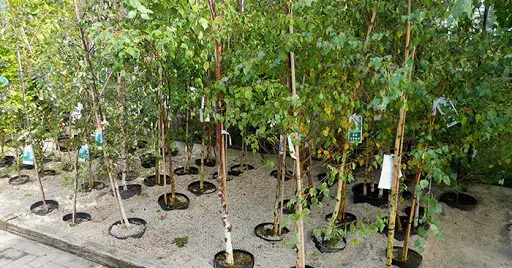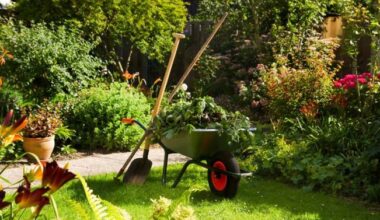Birches are fast-growing trees, admirable for their white trunks with smooth bark exfoliating into white parchment strips golden bronze, pinkish, orange, etc..
It is quite possible to grow it in a pot, however, the fact that it is a tree complicates pot cultivation in the long term and without any real interest. It will flourish much more in the garden. Only a few dwarf varieties will be an exception to the rule.
Contents
Trees can be grown in pots
In the forest, the trees are so close together that they adapt their growth and crown size to the amount of land available. Thus, pot cultivation may be suitable for them (with a few precautions), they will obviously be smaller than if they had been grown in the open ground. They dwarf like bonsai trees.
Planting birch in pots
If you plant a young birch tree, start with a pot of at least 15 inches in all directions. In the same way if it is a shrub, this dimension is valid for all the plants of weak development.
For the substrate, choose a mixture of leaf compost (3/4) and topsoil (or garden soil). This substrate is exhausted after several years, becoming a nutrient-free growing medium. Fertilizer is therefore the only nutrient that feeds the tree, it becomes indispensable!
Watering the birch in a pot
In the open ground, the roots can seek water deeper in the soil, but not in pots, where the plants dehydrate more easily. Birches like fresh soil during their growing season, so it’s a good idea to install drip watering. This will prevent even temporary droughts, which can slow or even stop their growth.
Avoid pots with water reserves, and consider increasing the amount of water delivered on hot days or in high winds, and mulch the surface of the pot to keep the soil cool.
Maintenance and pruning of birch in pots
Birches require absolutely no maintenance except for occasional watering during the dry months for a few years after planting. You can abundantly mulch the plant to remedy this inconvenience.
Birch trees planted in containers require continuous watering, which can be done with an automatic watering timer.
Birch trees are generally not very susceptible to disease and pests. They have a low tolerance to pruning and are often contaminated by European canker (Nectria galligena) when the wounds are large. Simply clean the twigs of broken branches and cleanly prune back branches that are broken or have necroses and blisters.
You can rub with a sponge soaked in soapy water once a year to enhance the shine of trunks and large branches in the fall.
Repotting the birch tree
If your birch is still young, regularly increase the diameter of its pot at each repotting: generally 1 inch per year. When it has reached its adult size, and potting becomes more delicate due to the weight and size of the pot, perform surfacing at the end of winter. This involves replacing the first 2 inches of soil with rich soil (manure compost, compost with new soil added…).
Every 4 to 5 years, the tree must still be taken out of its pot and part of the soil must be replaced. If necessary, take advantage of the somewhat heavy operation to prune part of the roots.
Multiply the birch
The multiplication of birch trees is a matter for professionals who carry out grafts or cuttings. Spontaneous seedlings can be valorized by extracting the young seedlings in the following spring. The seeds should not be buried. Place a plank on the ground to keep the seeds on the ground after they have spread.
Using and associating the birch tree
The qualities of birch allow it to adapt to all garden styles, but in a cool climate, as it is not at all popular in the south of our country. The white bark reinforces the enchanting atmosphere of winter. They harmonize with pale skies, reinforce the frosty appearance of the branches, and catch the light as soon as a ray of sunlight touches them.
Birch trees are large to medium-sized, deciduous, rustic trees with decorative bark and light foliage, used in groups or alone in large gardens. Some have a beautiful weeping habit like Betula pendula ‘Crispa’ (with laciniate leaves) or ‘Tristis’, a purple or creamy variegated foliage like Betula pendula ‘Royal Frost’ and Betula nigra ‘Shiloh Splash’ and of course a colored bark. You can create a fake vine by putting 3 identical subjects in the same pit, to give more depth to the scene.
Summary
Birch is a beautiful ornamental tree, well known for its decorative white bark. Bought in pots or containers, you can plant it all year round, outside of periods of frost and high heat.
In this case, take care to water regularly at the beginning, especially in summer.









